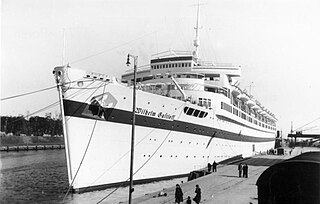
MV Wilhelm Gustloff was a German military transport ship which was sunk on 30 January 1945 by Soviet submarine S-13 in the Baltic Sea while evacuating civilians and military personnel from East Prussia and the German-occupied Baltic states, and German military personnel from Gotenhafen (Gdynia) as the Red Army advanced. By one estimate, 9,400 people died, making it the largest loss of life in a single ship sinking in history.
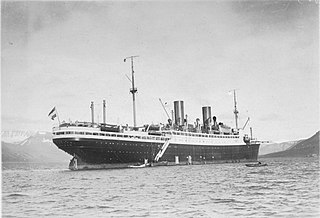
SS General von Steuben was a German passenger liner and later an armed transport ship of the German Navy that was sunk in the Baltic Sea during World War II. She was launched in 1923 as München, renamed General von Steuben in 1930, and renamed Steuben in 1938.
I-52, code-named Momi was a Type C3 cargo submarine of the Imperial Japanese Navy used during World War II for a secret mission to Lorient, France, then occupied by Germany, during which she was sunk.
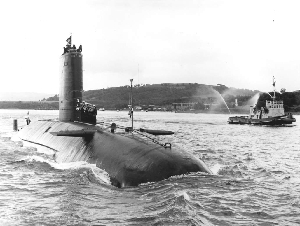
HMS Conqueror was a British Churchill-class nuclear-powered fleet submarine which served in the Royal Navy from 1971 to 1990. She was the third submarine of her class, following the earlier Churchill and Courageous, that were all designed to face the Soviet threat at sea. She was built by Cammell Laird at Birkenhead.

Goya was a Norwegian motor freighter used as a troop transport by Nazi Germany and sunk with a massive loss of life near the end of World War II.

The Baltic Sea campaigns were conducted by Axis and Allied naval forces in the Baltic Sea, the Gulf of Bothnia, the Gulf of Finland and the connected lakes Ladoga and Onega on the Eastern Front of World War II. After early fighting between Polish and German forces, the main combatants were the Kriegsmarine and the Soviet Navy, with Finland supporting the Germans until 1944 and the Soviets thereafter. The Swedish Navy and merchant fleet played important roles, and the British Royal Navy planned Operation Catherine for control of the Baltic Sea and its exit choke point into the North Sea.

The Soviet hospital ship Armenia was a transport ship operated by the Soviet Union during World War II to carry both wounded soldiers and military cargo. It had originally been built as a passenger ship for operations on the Black Sea.
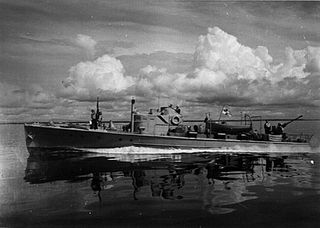
VMV-class patrol boat was a series of Finnish patrol boats, which served with the Finnish Coast Guard and the Finnish Navy during World War II.
Щ-213 was a Soviet Navy Shchuka-class submarine, Type X. She was built at the Sudostroytelnyi zavod imeny 61 kommunara in Mykolaiv, Ukrainian SSR, and entered service in October 1938 with the Soviet Black Sea fleet.
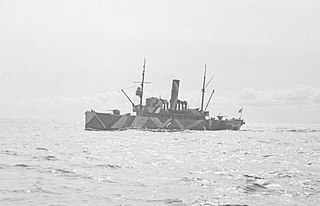
Louhi was a Finnish Navy minelayer. The ship was originally constructed for the Imperial Russian Navy but was taken over by the Finns during the Russian Civil War. She had originally been named Voin, but was renamed as M1 in Finnish service. In 1936 she was given the more personal name Louhi, following the procedure of all other major ships in the Finnish navy.

Kommuna is a submarine rescue ship in service with the Russian Navy's Black Sea Fleet and the world's oldest active duty naval vessel.
The World War II Soviet submarine L-21 belonged to the L-class or Leninets class of minelayer submarines. She was part of the last series of her class, having some improvements including more torpedo tubes. The commander during the war was Sergey S. Mogilevskiy.

The Gulf of Finland U-boat campaign lasted in the Gulf of Finland during the World War II against the Soviet Union between summer 1944 and spring 1945. During the campaign Finland switched sides and joined the Allies.

Submarine warfare in the Black Sea in World War II during 1944 involved engagements between submarines of the Soviet Black Sea Fleet attacking Axis merchantmen, defended by Romanian and German naval warships, as well as German U-boats and Romanian submarines attacking Soviet merchants on the eastern Black Sea. Before the conclusion of the campaign, Romania joined the Allies after King Michael's Coup. These engagements were a part of the naval Black Sea campaigns.

The Soviet submarine Baltic Sea campaign in 1941 was launched by the Soviet Navy at the early stage of Operation Barbarossa. The offensive was hampered by the quick German ground advance and the retreat of Soviet naval vessels from the main Baltic harbors.
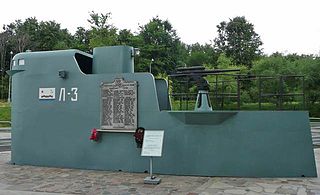
The Soviet submarine Baltic Sea campaign in 1944 was launched by the Soviet Navy to harass enemy shipping and naval military assets of the Nazi Germany on the Eastern Front during World War II.

The Soviet naval Baltic Sea campaign in 1945 was launched by the Soviet Navy to harass enemy shipping and naval military assets of Nazi Germany on the Eastern Front during World War II. Both submarines and surface units of the Soviet Navy were employed. The campaign scored successes during Operation Hannibal.
SS Argo was a Finnish Cargo ship that the Soviet submarine Shch-317 torpedoed on 16 June 1942 in the Gulf of Finland between Bogskär and Utö, Finland.

SS Bärenfels was a German steam cargo liner that was launched in 1921 for DDG Hansa. In 1940, she took part in the German invasion of Norway and was sunk by Fleet Air Arm dive bombers. Her wreck was raised, and in 1941, she was returned to service. In 1944, a Royal Navy midget submarine sank her, killing 11 of her complement. In 1947, her wreck was raised to be scrapped, but while under tow she sank a third time.














